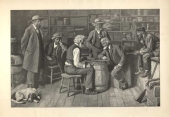The Checker Maven
The World's Most Widely Read Checkers and Draughts Publication
Bob Newell, Editor-in-Chief
Published every Saturday morning in Honolulu, Hawai`i
Noticing missing images? An explanation is here.
Faster, Cheaper, Better
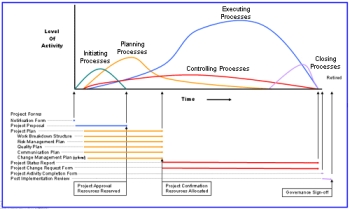
There's an old maxim well known in formal project management practice: "Faster - Cheaper - Better: Choose two." Or, in the words of that yesteryear Cambridge, Massachusetts salesman known simply as Cheap Al: "You can't have all the goodies for nothing."
This month's speed problem indeed calls upon two of the three attributes mentioned in our title, namely, faster and better. Although the problem is quite easy, you'll need to be fast and rather a better player to solve this one within the very brief allowed time. Of course, "cheaper" doesn't enter into the picture as The Checker Maven always has been and always will be a free publication. Sorry Al, but maybe you can have all the goodies for nothing!
Click on the link below to show our problem and start the unforgiving JavaScript clock.
March Speed Problem (very easy)
When you're done, clicking on Read More gives you a faster, cheaper, and better way to see the correct solution.![]()
Head's Redeemer
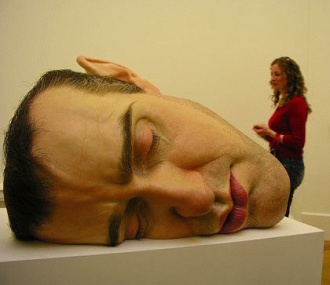
It seems that Mr. Lucius S. Head (whose visage, by the way, is certainly not shown in the picture above) is better known to us than to Mr. Ryan, as we know that he (Mr. Head) was once a resident of Chicago and played many games with old-time Windy City checker expert and somewhat controversial author John T. Denvir. Mr. Head also resided at one time in Minneapolis, Minnesota, and was Minnesota state champion. But such details notwithstanding, in this month's installment from Willie Ryan's Tricks Traps & Shots of the Checkerboard, we see an interesting and practical situation which Mr. Ryan attributes to Mr. Head. Here's Willie to tell us more.
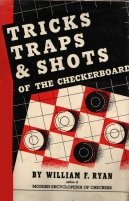
"L. S. Head, of Albany, New York, American member of the 1905 International Checker Team, was a modest soul whose name rarely appeared in checker periodicals of his day. Yet he was a distinguished and widely respected player, as well as an accomplished analyst. Among the few notable items credited to his name is the practical position treated here, known as "Head's Draw," which keeps popping up in play every now and then.
| 10-15 | 6-10 | 1-5*---1 |
| 23-18 | 25-22 | 22-17 |
| 11-16 | 9-14 | 5-9*---2 |
| 18-11 | 18-9 | 17-13 |
| 8-15 | 5-14 | 15-18* |
| 22-18 | 27-23 | 13-6 |
| 15-22 | 8-11 | 2-9 |
| 25-18 | 19-16 | 30-25 |
| 16-20 | 12-19 | 9-13 |
| 29-25 | 23-16 | 26-22---A |
| 4-8 | 11-15 | 10-15 |
| 24-19 | 32-27 | 28-24 |
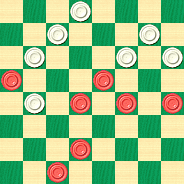
BLACK
Black to Play and Draw
B:W31,27,25,24,22,21,16:B20,18,15,14,13,7,3.
A---If 26-23, 10-15 are played, 23-19 insures a draw; but if 28-24 is used, black shoots the works with: 15-19, 24-15, 20-24, 27-20, 18-27, 31-24, 7-11, and black wins by capturing the piece on 25."
1---Despite the star here, KingsRow gives 1-6 to draw as well---Ed.
2---Again despite the star, KingsRow gives 15-18 to draw also---Ed.
Can you use your head and solve this one? Noodle on it for a while then head over to the solution by clicking on Read More.![]()
Grant vs. M'Guire
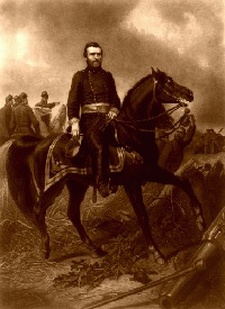
General Ulysses S. Grant
Everyone knows about the great American general Ulysses S. Grant, who fought on the side of the Union in the American Civil War. However, we can find no record of a Confederate general named M'Guire or McGuire. The only reference our research department was able to uncover was of a physician, Dr. Hunter Holmes McGuire, who served with the Confederate army and who was in fact present at the famed Battle of Gettysburg. However we can't find any indication that Dr. McGuire's unit ever faced any of General Grant's units in combat, and we're even more certain that they never met in person over the checkerboard. General Grant went on to be President of the United States, and Dr. McGuire went on to become a contributor to the first of the Geneva Conventions.

Dr. Hunter Holmes McGuire
Today's Checker School position, which is taken from an actual game between someone named Grant and someone named M'Guire, certainly didn't involve the two Civil War personages mentioned above; and the game actually took place in 1893, some 28 years after the end of the War Between the States. It's a small "set piece" battle which is of considerable practical interest.
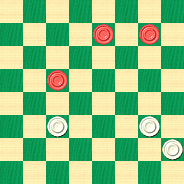
WHITE
Black to Play, White to Draw
B:W22,24,28:B7,8,14.
Can you align the troops such that the Black and White armies fight to a draw? Sound the bugles and beat the drums, then work out the solution before clicking on Read More to charge over to the solution, a sample game, and notes.![]()
Valentine's Day Celebration
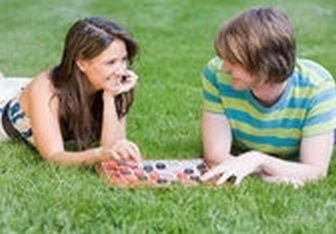
Valentine's Day is the traditional day of romance, yet we are certain that our game of checkers and romance are seldom associated. More's the pity, as we can see in the photo of the young folks just above, and the wonderful picture of the older folks just below.

We like to think that checkers can be an important part of a romantic relationship. Consider: checkers is good clean fun; it's sociable; and it's an inexpensive activity. It's one of the overlooked simple things that can add a lot to a couple's time together.
To celebrate Valentine's Day, here's a checker problem that is of moderate difficulty; we propose that it's just the right thing for you and your Significant Other to work on during a pleasant hour together, perhaps over a soda or a pot of tea. And who knows where it all might lead?

BLACK
Black to Play and Win
B:W25,22,21,20,K3:BK31,14,13,10,2.
Put your heart into finding the answer, then click on Read More for the charming solution.![]()
Winter Speedster

Here in much of North America we're mired in the depths of winter, but that doesn't seem to faze our speed skater in the picture above. He's having a great time out on the ice, making the most of the season.
At home, there's nothing like a checker problem to help us make the most of the season too, and this month we bring you an easy speed problem that will cheer you, even if it won't quite last through a whole cup of tea. In fact, it's easy enough that we think 10 seconds is plenty of time.
When you're ready, click on the link below and speed to your solution. After you're done, click on Read More to check your answer.
February Speed Problem (easy)
![]()
Marvin Returns to St. Louis

Marvin J. Mavin was back in St. Louis on a good-will tour, working in the inner-city schools with disadvantaged children. It was one of his favorite charitable activities and Marvin took every opportunity to further this cause.

But there were other items on Marvin's agenda for this visit. Marvin was scheduled to play an exhibition game at the St. Louis Civic Society Auditorium against the countywide amateur champion, Hinkley B. Dinkley. It was rumored that a number of major league scouts would be in attendance, with their eyes on Mr. Dinkley, who had made such a showing in amateur play that a professional contract was a real possibility. Mr. Dinkley, however, was also considering becoming a tennis pro; tennis seemed to be his real love, even though a major league checker career would be far more lucrative.

It seems, however, that prior to the game, Marvin made an unscheduled and rather prolonged stop--- at St. Louis' landmark Mudvisor Brewery. The press was not allowed to follow Marvin while he took a tour of the brewery, a tour that normally lasts about 30 minutes, though Marvin was not seen to exit the grounds until more than two hours had elapsed. Just what was Marvin doing during all of that time?
But now, Marvin and Hinkley were seated before the checkerboard, shaking hands and exchanging pre-game greetings.
"Ever been to the Mudvisor Brewery, Hink?" asked Marvin.
"Um, the name's Hinkley, and yes, I've been there once or twice. Nothing really special," replied Hinkley.
"Aw, c'mon Hink," Marvin continued, rather oblivious to Hinkley's reply, "they got that Mud Light in there and they give ya samples. Lotsa samples!"
Hinkley declined to reply, as the referee had signaled the start of play. Marvin had Black, and made his opening move.
| 1. | 9-13 |
Marvin leaned back in his chair, clasped his hands on the back of his neck, and chuckled, "Hey, Hink, thought I'd sorta give you a break, being as how you're an amateur and all!"
Hinkley did not reply but simply moved
| 1. | ... | 22-18 |
"Ah, now we're gettin' serious," said Marvin, and the game continued as follows.
| 2. | 12-16 | 24-20 |
| 3. | 8-12 | 25-22 |
| 4. | 16-19 |
Hinkley suddenly sat up straight, staring intently at the board, with an astonished look on his face. He blinked his eyes, blinked again, and continued to stare at the pieces.
"Whaddya lookin....." Marvin started to say, but he abruptly cut off his sentence, and then muttered, "Uh-oh...."
The forced exchanges took place, and then it was again Hinkley's turn.
| 4. | ... | 23-16 |
| 5. | 12-19 |
Hinkley thought for a few more minutes, and then looked Marvin straight in the eye and said, "Marvin, I think your visit to Mudvisor was ill advised," whereupon, Hinkley made his move.
Can you figure out what's going on here? Did Marvin make an error? What move had Hinkley been expecting Marvin to make? How did Hinkley respond?
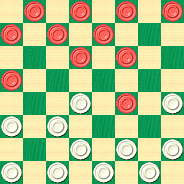
WHITE
White to Play, What Result?
W:W32,31,30,29,28,27,26,22,21,20,18:B19,13,11,10,7,6,5,4,3,2,1.
Put yourself in Hinkley's shoes and work this all out, then click on Read More for the rest of the story.![]()
Have It Your Way
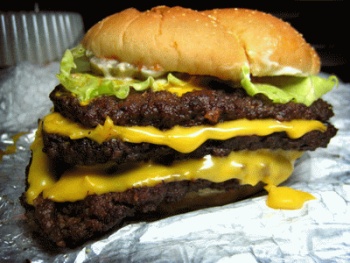
We certainly don't recommend that you consume the entire triple burger shown above in a single sitting, unless you're hungry beyond belief and health considerations are of no consequence. Instead, we recommend you try out today's triple checker problem, in which you can truly have it your way.
The first setting is this.
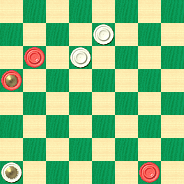
BLACK
Black to Play and Win
B:W26,23,K4:B24,K20,1.
If you don't like the first setting, then move the Black piece on square 1 over to square 2.
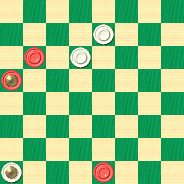
BLACK
Black to Play and Win
B:W26,23,K4:B24,K20,2.
And if even that doesn't please you, move the piece to square 3 instead.

BLACK
Black to Play and Win
B:W26,23,K4:B24,K20,3.
Have it your way--- move the Black piece to any one of the three squares as shown--- and Black will still win. Can you find the correct play in all of the positions?
Try to solve them; they're really not so difficult (well, mostly). Then after you've had it your way, have it our way by clicking on Read More to check your answers.![]()
Strickland's Draw

We return to Willie Ryan's popular classic, Tricks Traps & Shots of the Checkerboard for today's column. In this installment, we find the Black forces in a real predicament, needing, it seems, to draw a pair of aces. But Willie shows us how to beat the odds, as he explains in his own words below.

"Another distinguished member in the checker Hall of Fame is William Strickland, who, with Willie Gardner, of Leeds, England, was among the first to introduce the art of playing checkers blindfolded. Like Dunne, Shearer, and other luminaries of his day, Strickland was a prolific analyst and scholar, discovering many of the standard positions that today are known to all advanced players. Here we present the important Strickland Draw, which can arise from almost every opening on the board.
| 9-14 | 22-17 | 3-8 |
| 22-17 | 8-11 | 30-26 |
| 11-16 | 29-25 | 8-11 |
| 25-22 | 11-15---A | 26-23 |
| 8-11 | 25-22 | 5-9 |
| 17-13 | 15-24 | 32-28 |
| 11-15 | 27-11 | 11-15 |
| 24-19 | 7-16 | 31-26 |
| 15-24 | 23-19 | 15-24 |
| 28-19 | 16-23 | 28-19 |
| 4-8 | 26-19 |
arriving at the diagram.
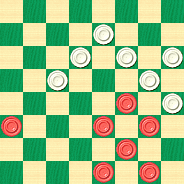
BLACK
Black to Play and Draw
B:W26,23,22,21,19,17,13:B14,12,10,9,6,2,1.
A---If 16-20 is played, proceed with 19-16, 12-19, 12-19, 23-16, 11-15, 26-23, 15-19, 30-26, 10-15, 17-10, 7-14, 16-11, 19-24, 13-9, 6-13; at this point 25-22 insures the draw, but if 32-28 is employed, black hits the jackpot with 15-18, 28-19, 14-17, 21-14, 5-9, 14-5, 3-7, 23-14, 7-30."
Can you turn up the card that saves the day? Don't be skunked; solve the problem and click on Read More to shuffle over to the solution.![]()
In the Hedges

Today's class in our monthly Checker School series is nearly a miniature, having but three men per side; and, as usual for a Checker School entry, it's eminently practical. Our title is taken from Thomas A. Hedges, who reportedly first solved the problem when it was published well over 100 years ago. Today, it remains a good position to know for the cross-board player.
BLACK
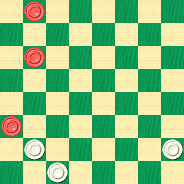
WHITE
White to Play and Win
W:W25,28,30:B1,9,21.
White has an advantage that can't be easily described as very large, but still, it's enough to win. Can you find your way out of the thicket, or will you be scratched by brambles? Have no fear of monsters lurking in the maze; clicking on Read More will rescue you at once and bring you to the solution, a sample game, and detailed notes.![]()
At the Stroke of Midnight
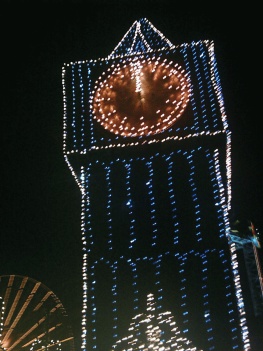
Did you stay up to see the clock strike twelve this past New Year's Eve? If you're like most of the Checker Maven staff, who are, after all, a little older than they once were, ten o'clock is already a late hour and waiting up for the stroke of midnight is a difficult task.
So instead, let's deal with not a clock stroke, but a checker stroke; that intriguing specimen of a checker problem that, like yogurt and opera, you either love or hate. And, since by now you've surely recovered from possible New Year's Eve revelry, we're setting out a position that is especially bewildering. Just take a look below.
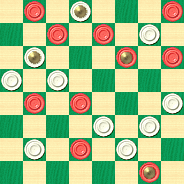
WHITE
White to Play and Win
W:WK2,8,K9,13,14,20,23,24,25,27:B1,4,6,7,K11,12,17,18,26,K32.
Of course, we expect you to solve this one completely from the diagram --- no setting up the board and moving the pieces! When you've clocked your solution, take the time to click on Read More to check your answer.![]()
The Checker Maven is produced at editorial offices in Honolulu, Hawai`i, as a completely non-commercial public service from which no profit is obtained or sought. Original material is Copyright © 2004-2025 Avi Gobbler Publishing. Other material is public domain, as attributed, or licensed under Creative Commons. Information presented on this site is offered as-is, at no cost, and bears no express or implied warranty as to accuracy or usability. You agree that you use such information entirely at your own risk. No liabilities of any kind under any legal theory whatsoever are accepted. The Checker Maven is dedicated to the memory of Mr. Bob Newell, Sr.

